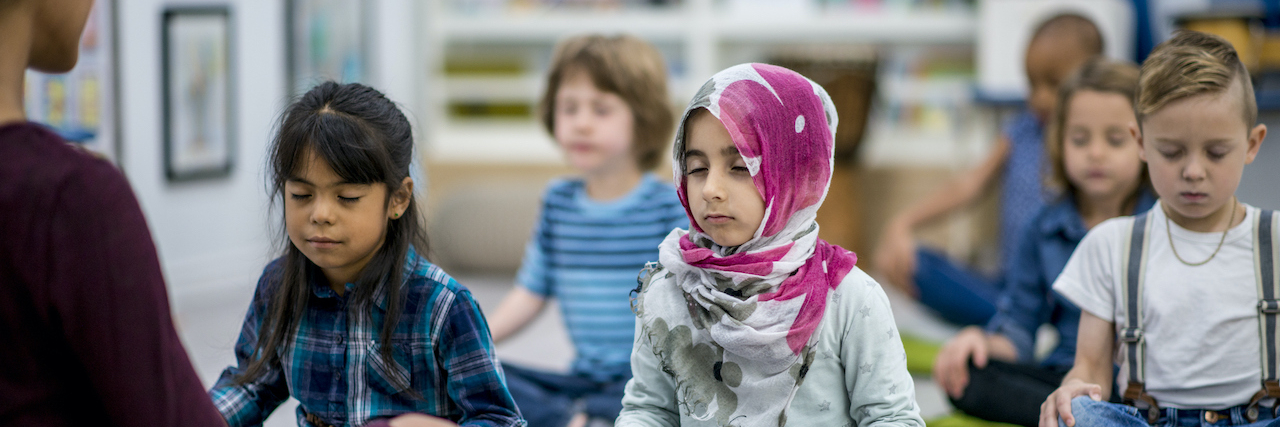Last year, my daughter brought a letter home from her school counselor. In the letter, the counselor explained that she would be offering weekly mindfulness classes to a select group of students, and my daughter was one of the students selected to participate. Obviously my daughter had no clue at the time what participating in a mindfulness group would entail, but she was willing to participate. Luckily, I knew from personal experience just how beneficial mindfulness can be for highly sensitive people and enthusiastically signed the form.
Over the next few months, I enjoyed the days when she would come home from school and tell me what mindfulness techniques she learned. Even more so, I really loved the moments when I’d catch her practicing mindfulness entirely on her own inside our home. As the class continued, I noticed many changes in my daughter’s overall behavior and mood. That’s when I realized just how much regular mindfulness practice helps everyone — especially children.
How Mindfulness Helps Children
Mindfulness can help with anyone’s overall wellness. In fact, mindfulness can help people regulate their emotions, focus throughout the workday and even decrease stress levels. While these aspects apply to everyone, there’s unfortunately little emphasis on the importance of mindfulness for children.
According to Anthony Saniger, founder of the health and wellness brand Standard Dose, mindfulness can help children become kind, confident empathetic humans who are better equipped to deal with a challenging, ever-changing world. Furthermore, mindfulness practice can help kids develop emotional awareness so they can better cope with difficult emotions like frustration, anger and grief.
Additionally, a Psychology Today article highlighted the more academic benefits of mindfulness, too. In many cases, mindfulness can improve children’s executive functions, including their cognitive control, flexibility and working memory. Mindfulness also teaches children skills like patience, focus and impulse control. All of these skills can help children in school and within social settings.
How Families Can Practice Mindfulness Together
Teaching children mindfulness skills takes time, but parents can absolutely do it if they’re willing to put in the effort. In fact, I’ve personally found that mindfulness practice works best if it’s presented as a family activity that everyone does together and uses on a regular basis within the household.
While there are many ways for families to practice mindfulness together, some are easier to implement than others. It just depends on your family and what works best for you based on your kids’ ages and your family schedule.
For example, I personally had success adding mindfulness practice into our already-established bedtime routine. Items like these Little Renegades Mindful Kid Cards for Bedtime provide easily-accessible guided meditation prompts for little ones to calm their worrying minds and settle into a restful sleep. Additionally, children’s books about mindfulness make great additions to your family library and bedtime story rotation.
If your kids are old enough, activities like the Mindful + Co Kids Happy Hearts Board Game can introduce mindfulness to children in a fun, playful way. These activities also encourage family bonding, which can further increase your child’s self-esteem and improve their overall well being.
Speaking from experience, mindfulness practice absolutely helps both adults and children in numerous ways. It’s well worth investing the time and energy into teaching your kids mindfulness skills — it will absolutely pay off in big ways.
Getty image by FatCamera

